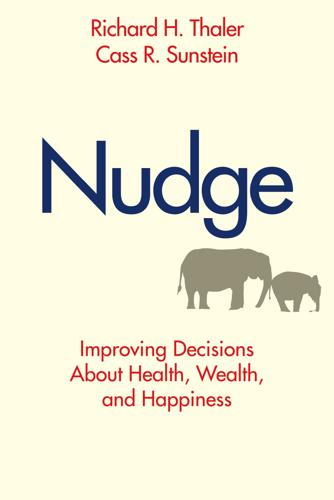
Nudge: Improving Decisions About Health, Wealth, and Happiness
by
Richard H. Thaler
and
Cass R. Sunstein
Published 7 Apr 2008
.* In return for a waiver of that right, a doctor, hospital, or insurance carrier could offer a patient a lower price for health care. Some patients would choose to take the lower price and assume the risk themselves. Others would prefer to waive medical malpractice liability and instead buy private disability or injury insurance. But these arrangements aren’t available to patients, because courts have long held that waivers of medical malpractice liability are unenforceable as “against public policy.” These rulings are the opposite of libertarian; they deny people the freedom to make contracts as they see fit. For patients, these legal rulings might sound great, a nice form of protection, and we will soon return to the question of protection.
…
Would you be angry if you were prevented from doing so? We know, we know, the analogy isn’t perfect, but consider this fact: both health care customers and taxpayers are now forced to help pay for the eighty-five thousand medical malpractice lawsuits that are filed each year.1 These lawsuits cost a lot of money—estimates range from $11 billion to $29 billion per year.2 Exposure to medical malpractice liability has been estimated to account for 5 to 9 percent of hospital expenditures—which means that litigation costs are a contributor to the expense of the health care system.3 Of course these particular figures are controversial and may be exaggerated, but no one doubts that many billions of dollars must be paid each year to buy insurance and to fend off liability.
…
So even if the risk of liability for negligence actually does reduce the frequency of injuries caused by doctors, these gains could easily be offset by the losses of those who are unable to afford treatment at all.6 Another problem with the current system is that jury awards for the pain and suffering that may be associated with a medical malpractice claim are highly erratic.7 It is difficult to predict, from the facts of the case, whether a plaintiff will get a lot or a little. In medical malpractice cases, people are sometimes awarded “punitive damages,” too, in order to punish the wrongdoer. But punitive damage awards also have a lot of variability.8 So patients are effectively forced to buy a kind of lottery ticket, one that might be worth anything from millions of dollars to nothing, but that is, on average, worth no more than 60 cents for every dollar spent (the rest going to lawyers).
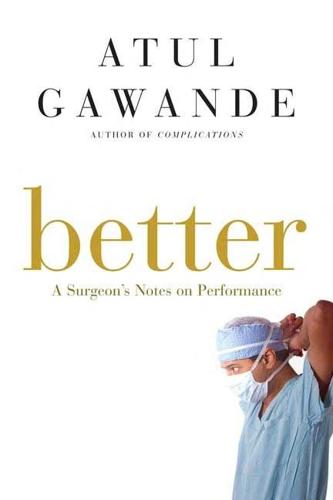
Better: A Surgeon's Notes on Performance
by
Atul Gawande
Published 2 Apr 2007
Kay in Academic Medicine 69 (1995): 842-46. WHAT DOCTORS OWE 87 Much of the detail on the American medical malpractice system comes from research by my colleagues David Studdert, Michelle Mello, and Troy Brennan of the Harvard School of Public Health. See, for example, D. M. Studdert et al., "Negligent Care and Malpractice Claiming Behavior in Utah and Colorado," Medical Care 38 (2000): 250-60, and D. M. Studdert et al., "Claims, Errors, and Compensation Payments in Medical Malpractice Litigation," New England Journal of Medicine 354 (2006): 2024-33. Two excellent reviews of what we know about the American malpractice system are D.
…
Two excellent reviews of what we know about the American malpractice system are D. M. Studdert, M. M. Mello, T. A. Brennan, "Medical Malpractice," New England Journal of Medicine 350 (2004): 283-92 (that's a short one), and Tom Baker's The Medical Malpractice Myth (Chicago: University of Chicago Press, 2005) (that's a longer one). 108 For more on the National Vaccine Injury Compensation program, see D. Ridgway's description in the Journal of Health Politics, Policy, and Law 24 (1999): 59-90, and also the program's Web site, www.hrsa.gov/osp/vicp/. 109 The New Zealand malpractice system is detailed by M. Bismark and R. Paterson in "No-Fault Compensation in New Zealand," Health Affairs 25 (2000): 278-83.
…
In courtroom 10B, David Santiago was on trial for cocaine trafficking and illegal possession of a deadly weapon. In courtroom 7B, a scheduling conference was being held for Minihan v. Wallinger, a civil claim of motor vehicle negligence. And next door, in courtroom 7A, Dr. Kenneth Reed faced charges of medical malpractice. Reed was a Harvard-trained dermatologist with twenty-one years of experience, and he had never been sued for malpractice before. That day, he was being questioned about two office visits and a phone call that had taken place almost a decade earlier. Barbara Stanley, a fifty-eight-year-old woman, had been referred to him by her internist in the summer of 1996 about a dark warty nodule a quarter-inch wide on her left thigh.

Confessions of a Surgeon: The Good, the Bad, and the Complicated...Life Behind the O.R. Doors
by
Paul A. Ruggieri
Published 3 Jan 2012
What happens to surgeons who do get judgments against them? Surgeons who lose or settle a medical malpractice suit get their names permanently placed in the secret National Practitioners Data Bank, the N.P.D.B., if the judgment is more than a certain dollar amount. The N.P.D.B. is a government agency created by Congress in 1986 to improve the quality of healthcare. It collects the names of physicians who have been sanctioned by state licensing boards, engaged in unprofessional behavior, or made medical malpractice payments. The information gathered by the N.P.D.B. is not accessible by the public. Hospitals and state licensing boards granting privileges to doctors are the only entities with access to the National Practitioners Data Bank.
…
Williams’s rehospitalization, however, until the day a certified letter from her attorney arrived. “Dr. Paul Ruggieri and Drs.___________are hereby named as defendants in the lawsuit . . .” I felt like throwing up. The ink on my malpractice policy wasn’t even dry and I was getting sucked into the black hole of a medical malpractice lawsuit. As it turned out, Mrs. Williams had been readmitted to the hospital and endured yet another major operation—to remove the sponge (the cause of the infection) from her abdominal cavity. I wondered how much she knew about the other mistakes made during her hysterectomy, or how close she had come to dying that day.
…
Lawyers know that doctors loathe being part of a lawsuit. They feed off their distaste for having to take time off to defend themselves. Lawyers know that surgeons detest being forced in front of a jury, having to justify their decisions and the care they gave.” Kathy was educating me on the anatomy of a medical malpractice lawsuit. “The process is cruel. It weeds out the irrelevant physicians, while slowly tightening the noose around the neck of the main accused.” As I was to learn, the process comes at a cost to all, both emotionally and financially. “Dr. Ruggieri, in the end you and the others will be exonerated by the truth.”
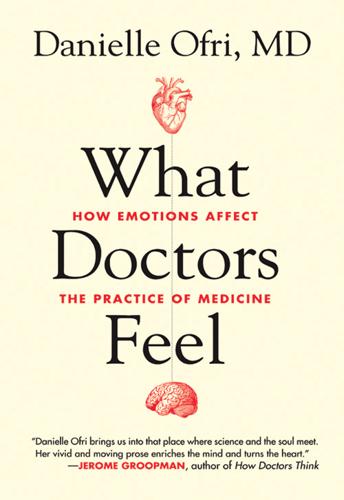
What Doctors Feel: How Emotions Affect the Practice of Medicine
by
Danielle Ofri
Published 3 Jun 2013
Nelson, “Physicians on Trial: Self-Reported Reactions to Malpractice Trials,” Western Journal of Medicine 148 (1988): 358–60. 7. Sara C. Charles and Eugene Kennedy, Defendant: A Psychiatrist on Trial for Medical Malpractice (New York: Vintage Books, 1986), 7. 8. Ibid. 9. Charles, “Physicians on Trial”; S. C. Charles, “Sued and Nonsued Physicians’ Self-Reported Reactions to Malpractice Litigation,” American Journal of Psychiatry 142 (1985): 437–40. 10. S. C. Charles, “The Doctor-Patient Relationship and Medical Malpractice Litigation,” Bulletin of the Menninger Clinic 57 (1993): 195–207. 11. S. C. Charles, “Malpractice Suits: Their Effect on Doctors, Patients, and Families,” Journal of the Medical Association of Georgia 76 (1987): 171–72. 12.
…
John Stone, “Gaudeamus Igitur,” Journal of the American Medical Association 249, no. 13 (1983): 1741–42. CHAPTER 7 1. A. Kachalia and D. Studdert, “Professional Liability Issues in Graduate Medical Education,” Journal of the American Medical Association 292 (2004): 1051–56. 2. R. A. Bailey, “Resident Liability in Medical Malpractice,” Annals of Emergency Medicine 61, no. 1 (2013): 114–17. 3. C. K. Kane, “Medical Liability Claim Frequency: A 2007–2008 Snapshot of Physicians,” AMA Policy Research Perspectives, www.ama-assn.org/. 4. A. B. Jena, “Malpractice Risk According to Physician Specialty,” New England Journal of Medicine 365 (2011): 629–36. 5.

Everybody's Guide to Small Claims Court
by
Ralph E. Warner
Published 2 Jan 1978
How the Discovery Rule Works With some types of cases, such as medical malpractice, the limitations period starts from the date the harm was discovered or reasonably should have been discovered. This rule protects people who don’t know they have a problem until well after it has occurred. Example: During an operation, a doctor leaves a small clamp in your abdomen. It isn’t until a year later that you experience extreme pain and see a different doctor, who orders an X-ray that shows the clamp. In most states, the statute of limitations for suits based on medical malpractice (often three years) begins from the date you learn of the problem, not the date of the original operation.
…
How to Approach a Professional Malpractice Case An increasing number of small claims cases are being filed against doctors, lawyers, accountants, and other professionals. The main reason is that it can be difficult or impossible to get lawyers to represent you in a formal court action. (Lawyers accept only one in 20 medical malpractice cases, according to one study.) As a result, the injured person must decide to either file without a lawyer in formal court or scale down the dollar amount of her claim to fit into small claims court. To succeed with a malpractice claim, you must establish all of the following facts: • Duty.
…
But you will probably need to do further legal research. Even the time limits specified in the following chart can be affected by things like the “Discovery Rule”—see “How the Discovery Rule Works,” below. Also, the time limits in the chart may not cover every situation. For example, claims involving medical malpractice, eviction, child or spousal support, fraud, product liability, consumer sales contracts, or faulty work by builders may all have different statutes of limitations. And, some states distinguish between different types of property (usually real and personal property) when establishing statutes of limitations.
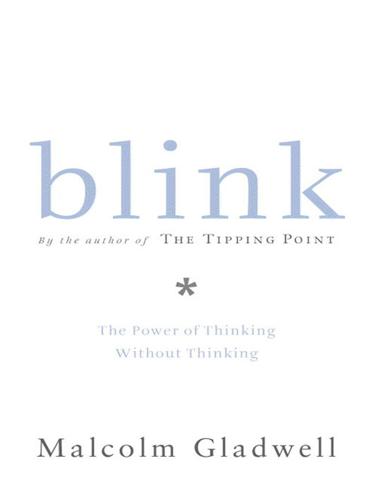
Blink: The Power of Thinking Without Thinking
by
Malcolm Gladwell
Published 1 Jan 2005
They thin-sliced. And what happened? The same thing that happened with Gottman: those people with the clipboards were really good at making predictions. 5. Listening to Doctors Let’s take the concept of thin-slicing one step further. Imagine you work for an insurance company that sells doctors medical malpractice protection. Your boss asks you to figure out for accounting reasons who, among all the physicians covered by the company, is most likely to be sued. Once again, you are given two choices. The first is to examine the physicians’ training and credentials and then analyze their records to see how many errors they’ve made over the past few years.
…
Patients file lawsuits because they’ve been harmed by shoddy medical care and something else happens to them. What is that something else? It’s how they were treated, on a personal level, by their doctor. What comes up again and again in malpractice cases is that patients say they were rushed or ignored or treated poorly. “People just don’t sue doctors they like,” is how Alice Burkin, a leading medical malpractice lawyer, puts it. “In all the years I’ve been in this business, I’ve never had a potential client walk in and say, ‘I really like this doctor, and I feel terrible about doing it, but I want to sue him.’ We’ve had people come in saying they want to sue some specialist, and we’ll say, ‘We don’t think that doctor was negligent.
…
In fact, the core of the book is research from a very new and quite extraordinary field in psychology that hasn’t really been written about yet for a general audience. But those ideas are illustrated using stories from every corner of society. In just the first four chapters, I discuss, among other things, marriage, World War II code breaking, ancient Greek sculpture, New Jersey’s best car dealer, Tom Hanks, speed-dating, medical malpractice, how to hit a topspin forehand, and what you can learn from someone by looking around their bedroom. So what does that make Blink? Fun, I hope. What do you want people to take away from Blink? I guess I just want to get people to take rapid cognition seriously. When it comes to something like dating, we all readily admit to the importance of what happens in the first instant when two people meet.

Shielded: How the Police Became Untouchable
by
Joanna Schwartz
Published 14 Feb 2023
The limits on attorneys’ fees in Section 1983 cases not only discourage lawyers from taking risky or low-damages cases; they also may lead lawyers to stop bringing civil rights cases altogether. Most lawyers who bring civil rights cases are jacks of many trades whose case dockets include personal injury, medical malpractice, or criminal defense cases. In fact, many lawyers I interviewed brought their first Section 1983 case without appreciating its financial risks. Someone came into their office with an infuriating story of unjust treatment at the hands of government officials, and they accepted that first case despite not really knowing how to litigate civil rights cases at all.
…
An attorney from Florida who used to bring only police misconduct cases now takes on dental malpractice cases with the hopes that “the dental stuff perhaps will pay some bills.” An attorney from Pennsylvania who used to focus primarily on Section 1983 cases now spends most of his time on personal injury and medical malpractice cases, which he considers “easier work that pays a lot more money.” Section 1988 was intended to encourage lawyers to bring cases vindicating constitutional rights that are important, even if they are worth relatively little in the way of compensable damages. But the current scheme means that a lawyer will likely only take this kind of case for the principle.
…
About ten years before he met Liese, Ruffier represented his first plaintiff in a civil rights case—someone who was arrested and assaulted by police in a manner too outrageous to turn away, in Ruffier’s mind. By the time he met Liese, Ruffier was spending about a quarter of his time on civil rights cases and the rest on personal injury and medical malpractice cases. He was and remains very particular about the civil rights cases he takes and generally will not represent someone who has ever been arrested or spent time in jail for fear that Florida judges and juries will not be sympathetic to their claims. Ruffier violated this rule of thumb when he accepted Rob Liese’s case.

How Capitalism Saved America: The Untold History of Our Country, From the Pilgrims to the Present
by
Thomas J. Dilorenzo
Published 9 Aug 2004
The medical profession itself is in jeopardy, for insurers are increasingly unwilling to offer medical liability insurance, even at astronomical rates. In January of 2003, thirty-nine West Virginia surgeons went on strike to protest rising medical malpractice insurance and the fact that most insurers in the state, recognizing the excessive risk that so many frivolous lawsuits create, do not even offer medical malpractice insurance.16 Liability insurance is not just a problem for the medical profession, however; day-care centers and many other industries find such insurance to be more and more difficult to secure. The “liability crisis” has also stifled innovation in numerous industries, since newer products carry with them more risk of lawsuits than do old, tried-and-true products.

Conflicted: How Productive Disagreements Lead to Better Outcomes
by
Ian Leslie
Published 23 Feb 2021
Lee and her colleagues found that the companies that owned up to their mistakes in public had higher stock prices a year later than those that tried to bury them. Inspired by Lee’s work, Ben Ho looked for other ways to establish a link between apologies and economic outcomes. Together with his colleague Elaine Liu, he looked at the way that medical malpractice is handled in the United States. When doctors make mistakes that harm their patients, they can get caught in a bind. On the one hand, presuming they are honest, they want to apologise. On the other, by doing so they expose themselves to the threat of a ruinous legal action. Now, imagine what it is like to be a patient who does not get an apology from a doctor who has made your life, or the life of someone you love, unnecessarily painful.
…
J., Norenzayan, A., ‘The Weirdest People in the World?’, Behavioral and Brain Science, 33 (2–3), June 2010, https://doi.org/10.1017/S0140525X0999152X Herman, Arthur, The Scottish Enlightenment: The Scots’ Invention of the Modern World, Fourth Estate, 2003 Ho, Benjamin, and Liu, Elaine, ‘Does Sorry Work? The Impact of Apology Laws on Medical Malpractice’, Journal of Risk and Uncertainty, 43 (2), June 201 Hoffman, Jan, ‘How Anti-Vaccine Sentiment Took Hold in the United States’, New York Times, 23 September 2019 Horowitz, Ben, The Hard Thing about Hard Things, HarperCollins USA, 2014 Hughes, Bettany, The Hemlock Cup: Socrates, Athens, and the Search for the Good Life, Vintage 2011 Huthwaite International, The Behaviour of Successful Negotiators Ickes, William, Everyday Mind Reading: Understanding What Other People Think and Feel, Prometheus Books, 2006 Jacobs, Alan, How To Think: A Guide for the Perplexed, Profile, 2017 Jaidker, K., Zhou, A., Lelkes, Y., ‘Brevity is the soul of Twitter: The constraint affordance and political discussion’, Journal of Communication, 69 (4), August 2019 Janis, Irving L., Victims of Groupthink: A Psychological Study of Foreign-Policy Decisions and Fiascoes, Houghton Mifflin, 1972 Jhaver, S., Vora, P., Bruckman, A., ‘Designing for Civil Conversations: Lessons Learned from ChangeMyView’, GVU Technical Report, December 2017 Kahan, Dan, ‘Ideology, motivated reasoning and cognitive reflection’, Judgement and Decision-Making, 8 (4), July 2013 Kahan, Dan, et al., ‘Science Curiosity and Political Information Processing’, Advances in Political Psychology, 38 (S1), February 2017 Kahneman, Daniel, Thinking, Fast and Slow, Penguin 2012 Kaplan, Jonas T., Gimbel, Sarah I., Harris, Sam, ‘Neural correlates of maintaining one’s political beliefs in the face of counterevidence’, Scientific Reports 6 (1), 2016, https://doi.org/10.1038.srep39589 Kim, D., Pan, Y., Park, H.
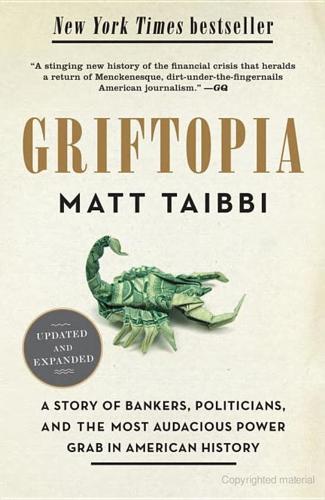
Griftopia: Bubble Machines, Vampire Squids, and the Long Con That Is Breaking America
by
Matt Taibbi
Published 15 Feb 2010
The heads of both the House and the Senate Judiciary committees—John Conyers in the House and Pat Leahy in the Senate—decided to introduce amendments to the various health care bills (which did not address the issue originally) that would have repealed one tiny little slice of McCarran-Ferguson. “Both amendments only pertained to the health insurance industry and the medical malpractice insurance industry,” says Erica Chabot, an aide to Senator Leahy. “And not only that,” says Martin. “Not only did they not repeal the exemption for all other types of insurance, but they also included a provision that said, basically, that this repeal only applies to price-fixing, bid-rigging, and market allocation.
…
“Not only did they not repeal the exemption for all other types of insurance, but they also included a provision that said, basically, that this repeal only applies to price-fixing, bid-rigging, and market allocation. Anything that didn’t fall into those categories, those were still legal.” So, really, Leahy and Conyers were trying to score one small victory: instead of establishing primacy over the entire insurance industry, they merely wanted to pass laws making it illegal for health or medical malpractice insurers to fix prices, rig bids for contracts, or divide up markets among themselves. They didn’t even attempt to broadly outlaw unfair anticompetitive practices. “But what if, for instance, an insurer says, ‘You can’t buy this product unless you also buy this other product’? Is that covered or not covered?”
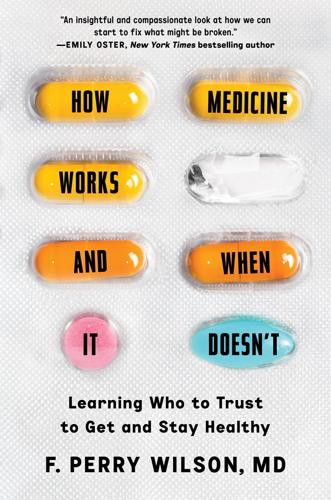
How Medicine Works and When It Doesn't: Learning Who to Trust to Get and Stay Healthy
by
F. Perry Wilson
Published 24 Jan 2023
With rare exceptions, bloodletting was harmful to the patient, and yet the practice continued, supported by tradition, “expertise,” and humans’ ability to ignore data that doesn’t fit their underlying assumptions. If the patient recovered after a good bloodletting, it was further evidence for the utility of bloodletting. If they did not… well, they certainly would have died anyway. It is quite possible that George Washington died of this medical malpractice, as his physicians removed 3.75 liters of blood from his body to cure a throat infection. This represents around 75 percent of the total blood volume of a typical adult male. He expired shortly after the procedure, on Saturday, December 14, 1799. When a patient asks for a treatment that is not causally linked to the outcome we are trying to achieve, a physician is obligated to refuse.
…
Kaiser Family Foundation, November 21, 2018, https://www.kff.org/other/slide/how-do-americans-cope-with-loneliness. 6 It could be, though; there is: Aaron Lazare, “Apology in Medical Practice: An Emerging Clinical Skill,” JAMA 296, no. 11 (September 20, 2006): 1401–04, https://doi.org/10.1001/jama.296.11.1401. 7 These laws are rather weak and probably: Benjamin J. McMichael, R. Lawrence Van Horn, and W. Kip Viscusi, “‘Sorry’ Is Never Enough: How State Apology Laws Fail to Reduce Medical Malpractice Liability Risk,” Stanford Law Review 71, no. 2 (February 2019): 341–409, https://papers.ssrn.com/sol3/papers.cfm?abstract_id=2883693. About the Author F. PERRY WILSON grew up in Connecticut before attending Harvard University, where he graduated with honors in biochemistry. He then attended medical school at Columbia University College of Physicians and Surgeons before completing his internship, residency, and fellowship at the University of Pennsylvania.
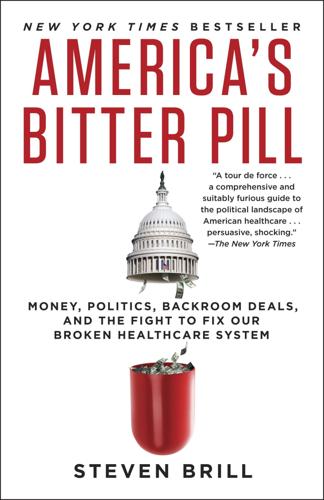
America's Bitter Pill: Money, Politics, Backroom Deals, and the Fight to Fix Our Broken Healthcare System
by
Steven Brill
Published 5 Jan 2015
Ignagni and her members feared that the country might soon be beset with New York–style “reform.” So in June 2008, Ignagni convinced her members to put together a more detailed reform proposal than the one AHIP had first espoused about six months earlier. Along with cost-cutting initiatives, such as electronic medical records and tort reform to curb medical malpractice suits that were thought to encourage doctors to practice expensive defensive medicine, Ignagni’s plan called for universal coverage that would include “limits” on excluding people with preexisting conditions, accompanied by a mandate that everyone had to buy insurance. Moreover, federally financed subsidies would be offered to people who needed help paying the premiums.
…
That was the most far reaching—and, given the lobbying clout that would be arrayed against it—the most far-fetched idea that DeParle included. However, DeParle had left out what the economic team considered to be some of the more important game changers, but ones that more left-of-center reformers had always been wary of: medical malpractice reform, tough penalties for hospitals with high patient readmission rates, and a push to allow hospitals and doctors to consolidate their services into “bundled payments.” Emanuel and Kocher also wanted to add estimates of the savings that could come with each. DeParle and Lambrew refused.
…
Which meant not only freedom from political influence but also freedom from having to do its job the way people in the real world did. THE DEMOCRATS AND THE TRIAL LAWYERS In the same meeting in which the White House staff decided to take the doc fix out of the bill, they discussed another issue that the doctors cared about: medical malpractice tort reform. Like many healthcare and legal policy analysts, the economic team believed that trial lawyers were abusing the courts by suing doctors too often for bad outcomes rather than bad treatment. Making it harder for doctors to be sued successfully would cut spending because it would lessen the practice of defensive medicine.
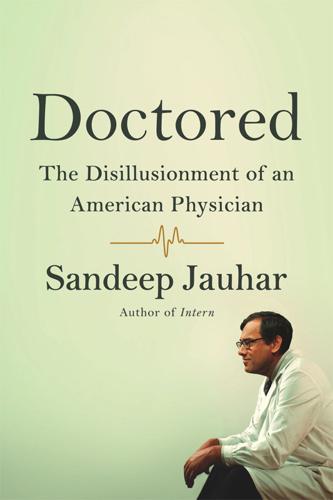
Doctored: The Disillusionment of an American Physician
by
Sandeep Jauhar
Published 18 Aug 2014
I was infuriated, not only by the precarious position in which we now found ourselves but also because I was sure that the unfounded fear of a lawsuit was at least partially driving the anesthesiologist’s decision. Nearly half of all anesthesiologists, and almost 100 percent of physicians in high-risk specialties such as neurosurgery, cardiology, and obstetrics, will face a medical malpractice claim at some point in their careers. Malpractice litigation is often the most stressful experience in a doctor’s professional life. Most doctors do not discuss it with colleagues or even with family members; it is a hidden shame. And though I might have sympathized with the anesthesiologist if I’d been on the other side of the doctor-patient dyad, none of this mattered to me as my pregnant wife lay on a gurney.
…
In part because of my own experience with Sonia and the baby, I have come to believe that doctors should deny treatment requests judiciously—and rarely. A surgeon might understandably refuse to operate on someone whose religious beliefs proscribe blood transfusions on the ground that he would not want to be forced into medical malpractice. But in cases with reasonable differences of opinion, in which the competing risks are at least debatable, it seems unfair and unwise to me to deny a patient’s choice. (If patient autonomy means anything, then patients have the right to make bad decisions, too.) Was Sonia’s anesthesiologist being virtuous or knavish?

Culture works: the political economy of culture
by
Richard Maxwell
Published 15 Jan 2001
It has been overwhelmingly pro-gun control and anti-death penalty; sympathetic to the homeless and the ecosystem; alert to child abuse, spousebattering, alcoholism, sexual discrimination and/or harassment, date-rape and medical malpractice . . . And television may be the only American institution outside public school to still believe in and celebrate the integration of the races, at least on camera.4 What is not on Leonard’s list is telling: TV tackles medical malpractice but not the systemic inequalities in access to health care; overt racial discrimination, but not structural racism or discrimination according to wealth and social class; individual suffering, but not the social policies that contribute to it.
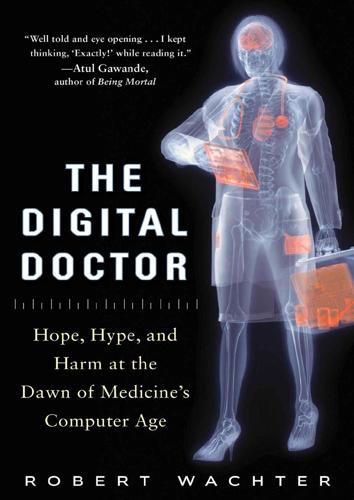
The Digital Doctor: Hope, Hype, and Harm at the Dawn of Medicine’s Computer Age
by
Robert Wachter
Published 7 Apr 2015
Donabedian, “The End Results of Health Care: Ernest Codman’s Contribution to Quality Assessment and Beyond,” Milbank Quarterly, 67:245 (1989). 37 The earliest malpractice cases K. A. DeVille, Medical Malpractice in Nineteenth-Century America: Origins and Legacy (New York: New York University Press, 1990). 37 “Even the most egregious Quacks” N. Smith, “Medical Jurisprudence,” lecture notes taken by A. J. Skelton (New Haven, CT: Yale University Medical School, 1827), cited in J. C. Mohr, “American Medical Malpractice Litigation in Historical Perspective,” Journal of the American Medical Association 283:1731–1737 (2000). 37 since malpractice verdicts turned on evidence S.

New Laws of Robotics: Defending Human Expertise in the Age of AI
by
Frank Pasquale
Published 14 May 2020
Ritter, Kristy Crooks, Erin Currey, Stephanie M. Fullerton, Lucia A. Hindorff, Barbara Koenig, et al., “The Clinical Imperative for Inclusivity: Race, Ethnicity, and Ancestry (REA) in Genomics,” Human Mutation 39, no. 11 (2018): 1713–1720. 22. Tom Baker, The Medical Malpractice Myth (Chicago: University of Chicago Press, 2005); Alex Stein, “Toward a Theory of Medical Malpractice,” Iowa Law Review 97 (2012): 1201–1258. 23. Meredith Broussard, Artificial Unintelligence: How Computers Misunderstand the World (Cambridge, MA: MIT Press, 2018), 32. 24. LeighAnne Olsen, J. Michael McGuinnis, and Dara Alsner, eds., Learning Healthcare System: Workshop Summary (Washington, DC: Institute of Medicine, 2007). 25.
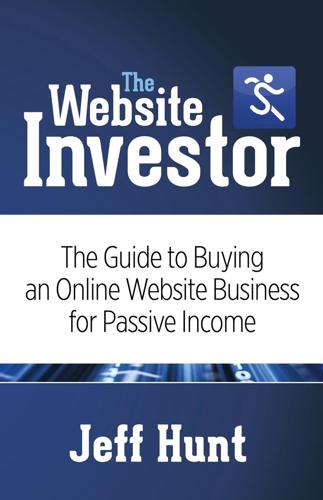
The Website Investor: The Guide to Buying an Online Website Business for Passive Income
by
Jeff Hunt
Published 17 Nov 2014
On each page of the website, there was an invitation for the reader to enter his or her name and mailing address to be sent a free information packet with more extensive information about the medical condition. The website owner sent out approximately thirty of those information packets per month. He sold those thirty leads to a medical malpractice attorney for $125 each. The attorney was happy to buy 360 leads a year for a few potential cases that could yield millions of dollars in legal fees. Recapping from an earlier story, a magician was selling his website that showcased his talents and invited visitors to schedule him for magic shows at birthday parties and corporate events.

Snowden's Box: Trust in the Age of Surveillance
by
Jessica Bruder
and
Dale Maharidge
Published 29 Mar 2020
The website OpenPGP (www.openpgp.org) lists a range of software to get you up and running, including the popular Gpg4win for Windows and GPGTools for Mac. And if you’re a whistleblower, it’s worth remembering: snail mail remains among the best ways to leak material to a journalist. In the summer of 2019, the New York Times received a brown envelope containing almost a hundred pages of sealed court and other documents that revealed possible medical malpractice in the death of Neil Armstrong, the first human on the moon. Even if you don’t foresee a need for encrypted communications, it’s worth making sure online predators aren’t using email as a phishing rod into your life. Avoid following links and opening files from untrusted senders. If you must open a suspicious attachment, experts recommend that you do it in Google Docs, so any infections don’t end up on your computer.
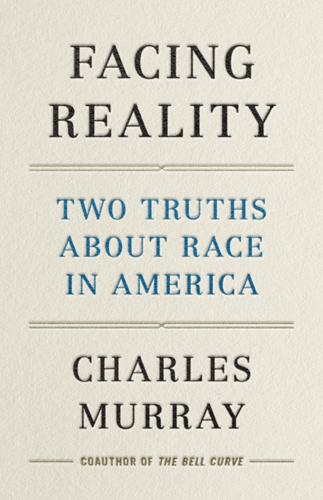
Facing Reality: Two Truths About Race in America
by
Charles Murray
Published 14 Jun 2021
The evidence from the bits and pieces is given credibility by its consistency with the findings of the meta-analyses, but if nonetheless the bits and pieces are misleading it should be easy to prove. The archives of city and state agencies, legal and medical professional organizations, and the federal government contain voluminous data on bar examinations and medical board certifications, on legal and medical malpractice, on police performance ratings, on teachers’ ratings, and on performance measures for other occupations requiring licensing or monitoring. There’s no shortage of evidence that could confirm or refute my presentation. That evidence just hasn’t been made available for public examination. As for the occupations that don’t require licensing or monitoring, every major corporation in the country has detailed records on job performance.
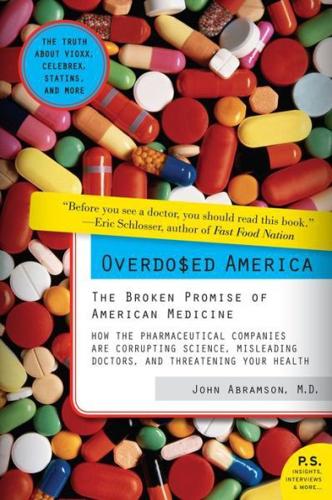
Overdosed America: The Broken Promise of American Medicine
by
John Abramson
Published 20 Sep 2004
Howard, author of The Collapse of the Common Good: How America’s Lawsuit Culture Undermines Our Freedom, commented that most of the doctors who do commit malpractice are not sued, and most of the lawsuits brought against doctors are about situations in which malpractice was not committed. Nonetheless, the current medical malpractice system consistently distorts our medical care. Doctors are aware of the risk of a malpractice suit lurking in every patient visit. Three-fifths of doctors in the United States admit that they do more diagnostic testing than is necessary because of the threat of litigation. And why not? The risk of ordering an extra test is nil, but the threat of a lawsuit because of a test not ordered is ever present—even when the likelihood of serious disease is very low and reasonable professional judgment would say the test was not necessary.
…
Clinical guidelines provide expert review of the research and allow doctors to be confident that their decisions regarding patient care reflect the best available scientific evidence. Guidelines also provide benchmarks by which the quality of a doctor’s care can be evaluated, and (always lurking in the background of a doctor’s thoughts) they are admissible as evidence of the accepted standards of care in medical malpractice cases. A study published in JAMA in 1999 evaluating the quality of the guidelines showed, ironically, that they often fall short of established standards. The following year The Lancet published a report that found that only one out of 20 clinical guidelines examined met established standards of quality for three simple criteria: description of the professionals involved in formulating the guidelines; description of the sources of information used to find the relevant scientific evidence; and grading of the evidence used to support the main recommendations.
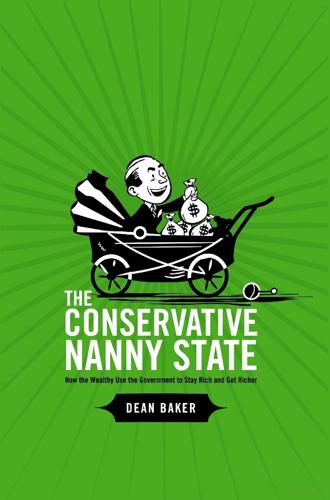
The Conservative Nanny State: How the Wealthy Use the Government to Stay Rich and Get Richer
by
Dean Baker
Published 15 Jul 2006
The issue of takings comes up often, but not exclusively, in the context of environmental regulation. For example, if the government prohibits building in a forest because it threatens the habitat of an endangered species, this usually reduces the value of the land. Similarly, in an effort to protect wetlands, the 5 For example, a recent study found that the cost of defending medical malpractice cases in the United States was less than 0.5 percent of total health care spending. This figure was comparable to the costs in England, New Zealand, and Australia, all countries with much lower total health care expenditures, see Anderson et al. (2005). 72 federal government has placed restrictions on the uses of land in some areas.

Robot Rules: Regulating Artificial Intelligence
by
Jacob Turner
Published 29 Oct 2018
In addition to being accepted by a body of medical practitioners, the practice must not be in the opinion of the court, unreasonable, illogical or indefensible. 36For discussion of this problem in medical liability, see Shailin Thomas, “Artificial Intelligence, Medical Malpractice, and the End of Defensive Medicine”, Harvard Law Bill of Health blog, 26 January 2017, http://blogs.harvard.edu/billofhealth/2017/01/26/artificial-intelligence-medical-malpractice-and-the-end-of-defensive-medicine/ (Part I), and http://blogs.harvard.edu/billofhealth/2017/02/10/artificial-intelligence-and-medical-liability-part-ii/ (Part II), accessed 1 June 2018. 37See Curtis E.A.
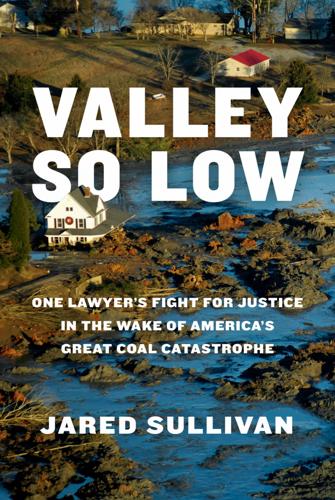
Valley So Low: One Lawyer's Fight for Justice in the Wake of America's Great Coal Catastrophe
by
Jared Sullivan
Published 15 Oct 2024
By 2008, he had been in private practice for a decade. After spending a few years at a local law firm, he went into business with his sisters, who were also lawyers, and two other partners (one of whom, Michael Pemberton, was his brother-in-law). Scott, like many Knoxville attorneys, worked a grab bag of cases to stay afloat: food poisoning, medical malpractice, DUIs, wrongful deaths. He could do criminal cases in his sleep, he once told a friend. Still, he tried to avoid any case he disagreed with personally or professionally, even when he assumed he could win. Raised in the Presbyterian Church and still religious, he had morals he tried to live by.
…
The attorneys needed to make sure they scanned and digitized each bill or record the workers handed over, Stewart added. Their office building had storage in the basement, but it would fill up quickly. Basements can also flood. The trickiest part of the discussion involved next steps. The three lawyers understood the basic shape of a car-crash case or a medical-malpractice suit, say. But their hastily assembled team didn’t specialize in environmental law; none of them had navigated a sprawling toxic-tort suit anything like Adkisson. They scribbled ideas on a small whiteboard next to the one with the death donut. They decided that first they would get the facts of the case through depositions.
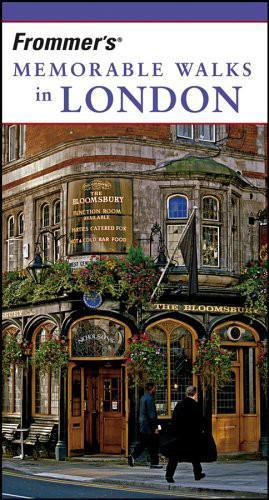
Frommer's Memorable Walks in London
by
Richard Jones
Published 2 Jan 1998
Walk counterclockwise around the square and pause outside: 23. 35 Bedford Square, the former home of Thomas Wakley (1795–1862), a surgeon and friend of Charles Dickens who founded The Lancet, England’s most prestigious medical journal. Wakley started the periodical in 120 • Memorable Walks in London order to criticize medical malpractice and nepotism, an endeavor that involved him in numerous libel actions. While serving as coroner for the West Middlesex Hospital, Wakley often allowed Dickens to attend his examinations—providing Dickens with plenty of fodder for his novels. As you continue walking around the square, take note of the house at: 24. 42 Bedford Square.

American Gun: The True Story of the AR-15
by
Cameron McWhirter
and
Zusha Elinson
Published 25 Sep 2023
The first thing that he posted that night was something he took from a blogger, a meme titled “2011 Deaths.” It began with a photograph of an AR-15. Next to the photo were the words “323 by these.” Below was a photo of a hammer: “496 by these.” Below the hammer were photos and stats for people killed by knives, drunk driving, and medical malpractice. At the bottom of the meme was this sentence: “You are SIX HUNDRED TIMES MORE LIKELY to DIE by using your OBAMACARE, than by a semi-automatic rifle. Sooo, feel sick?” Waltz followed up with a flurry of posts and reposts. He started reading about the Three Percenters, a militia movement founded in 2008 that believed only 3 percent of the colonists had fought to gain American independence.
…
MOLON LABE Chris Waltz was appalled: Information in this chapter relating to Waltz stems from author interviews with him unless otherwise indicated. The first thing that he posted: Some of the statistics cited in the meme were roughly accurate, based on FBI uniform crime data and estimates of the extent of U.S. medical malpractice. Others were way off. The FBI reported 323 people had been killed by long guns in 2011, not just semiautomatic rifles. The number of people killed by ARs that year was far fewer than 323, but the meme implied the deaths had all been caused by ARs. Such social media propaganda wasn’t about exactitude.

Attempting Normal
by
Marc Maron
Published 28 Apr 2013
“Thinking out of the box is a learned process that should be next to godliness in the priorities in what to teach your children. The trick is to recognize when the box, itself, is faulty and deserving change.” Barry Maron while watching and hearing a jury of 12 peers in Oklahoma make a decision in a medical malpractice case against a loser doctor. Shades of the OJ jury nullification. In case you aren’t reading carefully, he just quoted himself in this card. For Mother’s Day, of course. Enjoy the late great United States of America as it morphs into the Socialist USA. Words cannot help if all reasonable actions have failed.

The Captured Economy: How the Powerful Enrich Themselves, Slow Down Growth, and Increase Inequality
by
Brink Lindsey
Published 12 Oct 2017
Svorny, “Beyond Medical Licensure,” Regulation, Spring 2015, pp. 26–29. 31.See Shirley Svorny, “Medical Licensing: An Obstacle to Affordable, Quality Care,” Cato Institute Policy Analysis no. 621, September 17, 2008, p. 7. 32.See Svorny, “Medical Licensing”; Shirley Svorny, “Could Mandatory Caps on Medical Malpractice Damages Harm Consumers?” Cato Institute Policy Analysis no. 685, October 20, 2011; Katherine Baicker and Amitabh Chandra, “Defensive Medicine and Disappearing Doctors?” Regulation, Fall 2005, pp. 24–31. 33.Adriana D. Kugler and Robert M. Sauer, “Doctors without Borders? Relicensing Requirements and Negative Selection in the Market for Physicians,” Journal of Labor Economics 23, no. 3 (July 2005): 437–66. 34.Miriam J.
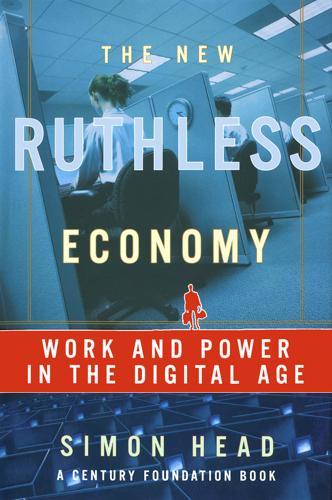
The New Ruthless Economy: Work & Power in the Digital Age
by
Simon Head
Published 14 Aug 2003
See also MIT Commission on Industrial Productivity Mass customization, 44, 45 Mass production, 6-7,15,17-25, 35, 39; in aircraft industry, 36; history of, 18-19; inculcated in U.S. manufacturing, 172; Japanese methods, 38, 40; and metal working industries, 19; new incarnation of, 5, 6, 7, 170-71; and service industries, 7,16,17,171,186 McCain, John, 185 McCormick, Don, 96-97 McCormick reapers, 22 McGrath, Mike, 108 McKinsey Global Institute, 54-57 MCOs. See Managed care organizations Measurement of work, 66-67. See also Scientific management; Tac (time allowed for completion of job); Time-and-motion studies 219 INDEX Medical malpractice, 141 Medical reengineering, 5,13, 117-52; effect on medical schools and teaching hospitals, 127-29,149; elimination of office visits, 133; failure of, 177; medical databases, use of, 130-33; outpatient care as focus of, 128; physician and/or public resistance to, 9,119-21, 177,184; software to support, 171; team structure and, 133; telephone triage, use of, 126; usual vs. planned medicine, 131,142.
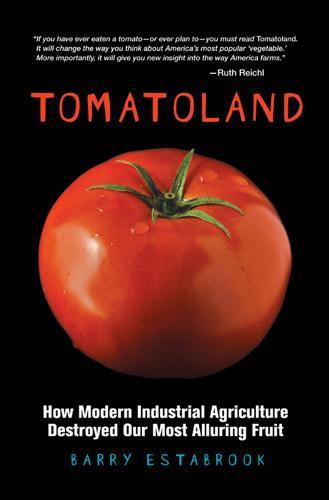
Tomatoland: How Modern Industrial Agriculture Destroyed Our Most Alluring Fruit
by
Barry Estabrook
Published 6 Jun 2011
One of the social workers helping Carlitos’s parents realized that the family faced an insurmountable financial burden and needed legal help. The social worker contacted a local lawyer, who confessed that he would have been completely over his head with such a complex case. He did, however, have a colleague who specialized in catastrophic personal injury, product liability, and medical malpractice litigation. He picked up the telephone and put in a call to Andrew Yaffa, a partner in the firm Grossman Roth, which has offices in Miami, Fort Lauderdale, Boca Raton, Sarasota, and Key West. Although they had no way of knowing it, Abraham Candelario, Francisca Herrera, and Carlitos had just caught what might have been the first break they had ever received in their hardscrabble lives.
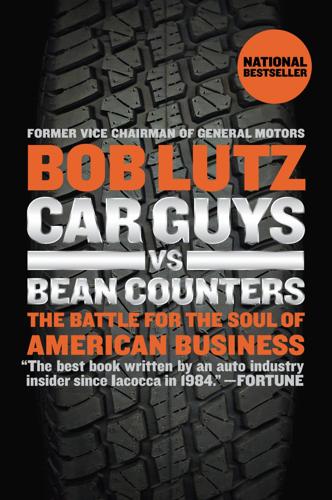
Car Guys vs. Bean Counters: The Battle for the Soul of American Business
by
Bob Lutz
Published 31 May 2011
Health care costs grew and grew, accelerated, as always, by America’s unique “contingent fee” legal system, whereby the penniless victim can see justice done by hiring a lawyer who is willing to help “for free” in exchange for a percentage of a possible settlement. Noble intent, but that’s not how it turned out. In a classic example of the law of unintended consequences at work, “medical malpractice” (along with “personal injury” in general) became an ever more powerful branch of the legal profession, with active solicitation—in fact, aggressive searches—for possible new “victims” who could be lucratively “assisted.” Trial lawyers like to point out that all this is untrue, that only a small portion of America’s health care bill is accounted for by settlements, but, while technically true, that misses the point.

Hillbilly Elegy: A Memoir of a Family and Culture in Crisis
by
J. D. Vance
Published 27 Jun 2016
“Well,” she said, pausing for a moment to reflect, “then get your hands on some arsenic. That way no one will know.” Her back surgery, it turned out, was completely unnecessary. She had a broken hip, and as soon as a surgeon repaired it, she was back on her feet, though she used a walker or cane from then on. Now that I’m a lawyer, I marvel that we never considered a medical malpractice suit against the doctor who operated unnecessarily on her back. But Mamaw wouldn’t have allowed it: She didn’t believe in using the legal system until you had to. Sometimes I’d see Mom every few days, and sometimes I’d go a couple of weeks without hearing from her at all. After one breakup, she spent a few months on Mamaw’s couch, and we both enjoyed her company.

The Healing of America: A Global Quest for Better, Cheaper, and Fairer Health Care
by
T. R. Reid
Published 15 Aug 2009
Health System Performance : A National Scorecard,” Health Affairs Web Exclusive, September 20, 2006, p.W457. 2 WHO, The World Health Report, 2000, Annex Table 7, p. 189. 3 David Himmelstein et al.,“MarketWatch: Illness and Injury As Contributors to Bankruptcy,” Health Affairs Web Exclusive, February 2, 2005, pp.W5-62. 4 Ellen Nolte et al., “Measuring the Health of Nations: Updating an Earlier Analysis,” Health Affairs, January/February 2008, p. 71. 5 The Commonwealth Fund, Multinational Comparisons of Health Systems Data, November 2006. 6 Schoen et al., “U.S. Health System Performance.” 7 Ibid. 8 Patricia Danzon,“Liability for Medical Malpractice,” Handbook of Health Economics, vol. 1B (Burlington, Ma.: Elsevier, 2000), chapter 26. 9 For example, see “UnitedHealth Slashes Forecast,” Wall Street Journal, April 23, 2008, p. B4; PULSE (newsletter), September 2005, p. 1. 10 An ace reporter, Lisa Girion of the Los Angeles Times, has reported in depth on the industry’s selection practices.

Social Life of Information
by
John Seely Brown
and
Paul Duguid
Published 2 Feb 2000
Consequently, it is more usual to think of bots as having "control over their own actions and their own internal state," as one account puts it.30 While it might solve the problem of blind obedience, this autonomy raises problems of its own. If bots make decisions and give advice autonomously, who takes responsibility for those decisions? Can Eliza be sued for medical malpractice? And if not, should the programmer be sued instead? Can Shallow Red be sued for business malpractice? And if not, who should be sued, the programmer or the company that the chatterbot represents? If the owner of a bot should take responsibility for those actions, then that owner must have some control over and insight into them.

The Slow Fix: Solve Problems, Work Smarter, and Live Better in a World Addicted to Speed
by
Carl Honore
Published 29 Jan 2013
Study after study shows that what many patients want after being the victim of a medical mistake is not a lump sum payment or the physician’s head on a plate. What they really crave is what FedEx delivered in the wake of that package-tossing incident: a sincere apology, a full explanation of how the error occurred and a clear plan to ensure the same thing will not happen again. Among patients who file a suit for medical malpractice in the United States, nearly 40 per cent say they might not have done so had the attending physician explained and apologized for the mishap. The trouble is, many in the medical profession are too proud or too scared to say sorry. Those that do so reap the benefits. In the late 1980s the Department of Veterans Affairs Medical Center in Lexington, Kentucky became the first hospital in the United States to tap the power of the mea culpa.

Off the Edge: Flat Earthers, Conspiracy Culture, and Why People Will Believe Anything
by
Kelly Weill
Published 22 Feb 2022
Theories like these help people grapple with feelings of powerlessness by positioning other human beings, with agendas and motivations, as responsible for medical conditions. In doing so, believers can avoid the uncomfortable truth: that life and death can lie with something like a virus, which cannot be voted out of office or sued for medical malpractice. Miracle cures, meanwhile, treat the other side of conspiratorial health beliefs, falsely claiming to be the real solution to an ailment—the one that governments or pharmaceutical companies allegedly try to hide. One modern conspiracy kingpin, for example, sells a book claiming you can beat diabetes with a secret cure that doctors hide because “drug companies would much prefer to keep you dependent on insulin and diabetes drugs.

Mistakes Were Made (But Not by Me): Why We Justify Foolish Beliefs, Bad Decisions, and Hurtful Acts
by
Carol Tavris
and
Elliot Aronson
Published 6 May 2007
My heart and my best intentions still tell me that's true, but the facts and the evidence tell me it is not." 4 Daniel Yankelovich and Isabella Furth (2005, September 16), "The Role of Colleges in an Era of Mistrust," The Chronicle of Higher Education, pp. B8—B11. Quote on p. B11. 5 Posted on the Web site of an advocacy group called The Sorry Works!, a coalition of physicians, hospital administrators, insurers, patients, and others concerned with the medical malpractice crisis. At Mount Sinai School of Medicine in New York and several other medical schools, residents are learning how to acknowledge mistakes and apologize for them, as well as how to distinguish a bad outcome that is not their fault from one that is. See Katherine Mangan, "Acting Sick," The Chronicle of Higher Education, September 15, 2006. 6 Richard A.

How Doctors Think
by
Jerome Groopman
Published 15 Jan 2007
Elmore et al., "Variability in radiologists' interpretations of mammograms," NEJM 331 (1994), pp. 1493–1499; Yulei Jiang et al., "Potential of computer-aided diagnosis to reduce variability in radiologists' interpretations of mammograms depicting microcalcifications," Radiology 220 (2001), pp. 787–794; Daniel B. Kopans, "Mammography screening is saving thousands of lives, but will it survive medical malpractice?," Radiology 230 (2004), pp. 20–24. More detail about Kundel's studies, particularly his seminal work, is found in his article in the Journal of the American College of Radiology cited above, as well as in G. Revesz and H. L. Kundel, "Psychophysical studies of detection errors in chest radiology," Radiology 123 (1977), pp. 559–562.

Nothing but Net: 10 Timeless Stock-Picking Lessons From One of Wall Street’s Top Tech Analysts
by
Mark Mahaney
Published 9 Nov 2021
The founders’ letter in the S1 declared that the company strove to provide users “with great commercial information.” The financial win here was that a significant percentage of searches on Google (perhaps a third) did have commercial intent—for example, how can I find the cheapest flights to Houston, where can I buy a baseball catcher’s mitt, how can I hire a good medical malpractice lawyer. And there were many marketers who were keen to pay to advertise directly against those searches. There are two key points that help explain why Google has always faced such an enormous TAM—and premium revenue growth—opportunity. First, Google dramatically eased people’s access to information.

Spooked: The Trump Dossier, Black Cube, and the Rise of Private Spies
by
Barry Meier
Published 17 May 2021
Private operatives, lawyers, and crisis management experts have little interest in transparency, so they often cloak their open records requests by laundering them through a contractor to make it appear that an inquiry is coming from someone else. For its part, Fusion GPS had long employed a former journalist who was an expert on open records laws as a contractor. That ex-reporter, Russell Carollo, had spent many years at the Dayton Daily News, where he had won numerous awards including a Pulitzer Prize for articles exposing medical malpractice by military doctors. He had a reputation for being cantankerous and once told a colleague that he didn’t just burn his bridges, he “blew them up.” By the late 2000s, Carollo had run through a series of newspapers and was having difficulty finding a job. He faced another challenge. He was diagnosed with early symptoms of Parkinson’s disease.

Everything Is Obvious: *Once You Know the Answer
by
Duncan J. Watts
Published 28 Mar 2011
Abel and C. Page. New York: Van Nostrand. Lazear, Edward P. 2000. “Performance Pay and Productivity.” American Economic Review 90 (5):1346–61. Lazer, David, Alex Pentland, Lada Adamic, et al. 2009. “Social Science: Computational Social Science.” Science 323 (5915):721. Leonhardt, David. 2009. “Medical Malpractice System Breeds More Waste.” New York Times, Sept. 22. ———. 2010. “Saving Energy, and Its Cost.” New York Times, June 15. Lerner, Josh. 2009. Boulevard of Broken Dreams: Why Public Efforts to Boost Entrepreneurship and Venture Capital Have Failed—and What to Do About It: Princeton, NJ: Princeton University Press.

Affluenza: The All-Consuming Epidemic
by
John de Graaf
,
David Wann
,
Thomas H Naylor
and
David Horsey
Published 1 Jan 2001
MASLOW’S HIERARCHY OF NEEDS The question is, has America—weakened by affluenza—slipped down the hierarchy in the last thirty years? It seems the rungs of Maslow’s ladder have become coated with slippery oil, as in a cartoon. According to polls, we’re more fearful now. We’re more insecure about crime, the possible loss of our jobs, and catastrophic illness. More than fifty thousand Americans die every year from medical malpractice, making us all the more insecure about our health. How can we meet intrinsic community needs when sprawl creates distances between people? How can we feel a sense of beauty, security, and balance if beautiful open spaces in our communities are being smothered by new shopping malls and rows of identical houses?
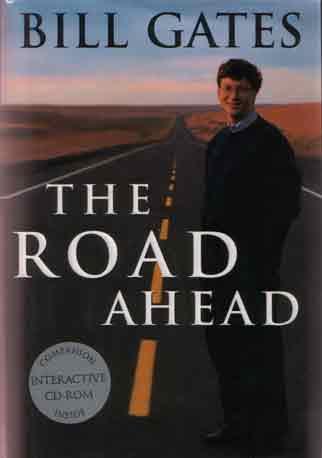
The Road Ahead
by
Bill Gates
,
Nathan Myhrvold
and
Peter Rinearson
Published 15 Nov 1995
The public may insist that the police record themselves in the course of their work. And the police could be all for it, to guard against claims of brutality or abuse on one hand and as an aid in gathering better evidence on the other. Some police forces are already videorecording all arrests. This sort of record won't affect just the police. Medical malpractice insurance might be cheaper, or only available, for doctors who record surgical procedures or even office visits. Bus, taxi, and trucking companies have an obvious interest in the performance of their drivers. Some transportation companies have already installed equipment to record mileage and average speed.

Servant Economy: Where America's Elite Is Sending the Middle Class
by
Jeff Faux
Published 16 May 2012
We know that the Germans and the Scandinavians maintain high wages and high productivity through a social contract that gives workers a stake in success. We know that they finance their public investments through higher taxes. We know that they produce better students by investing in high-quality teachers and schools. We know that they avoid the mountain of lawsuits and medical malpractice insurance with government-managed health care and social services that do not require you to hire a lawyer in order to pay your doctor bills and feed your family while you recover. The problem is not that Americans “have resisted this approach” because we are too xenophobic to accept ideas from elsewhere.

The Winner-Take-All Society: Why the Few at the Top Get So Much More Than the Rest of Us
by
Robert H. Frank, Philip J. Cook
Published 2 May 2011
Tort-related earnings of attorneys thus depend on the number of suits filed, the probability of winning, and the average damages awarded. The years since 1960 have seen large increases in all three. Thus cases in which products were blamed for injuries increased fourfold between 1 976 and 1986, and in the decade ending in 1 987 more medical malpractice suits were filed than in the entire previous history of American tort law. Damage claims against cities doubled be tween 1 982 and 1986. Between 1 984 and 1985 alone, claims filed against the federal government grew by 30 percent. The plaintiff 's probability of winning, which was between 20 and 30 percent for product-liability cases in the 1 960s, had grown to more than 50 per cent by the 1980s.
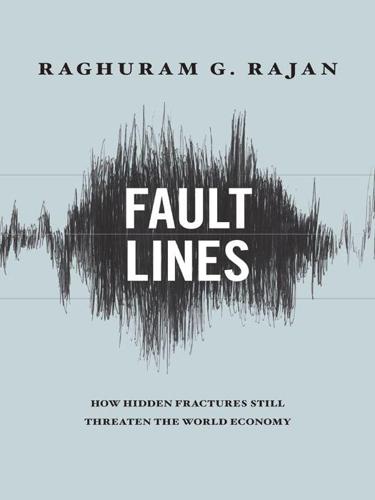
Fault Lines: How Hidden Fractures Still Threaten the World Economy
by
Raghuram Rajan
Published 24 May 2010
Madoff, Bernard Malaysia: economic growth of export-led growth strategy of investment in managed capitalism: in Asia challenges of export-led growth strategies and investment and success of Mandeville, Bernard, The Fable of the Bees markets. See capitalism; financial markets; housing market; prices; stock market marriage McCarthy, Nolan Medicaid medical care. See health care; physicians medical malpractice Medicare Merrill Lynch Mexico: conditional cash transfers financial crisis of Mian, Atif microcredit middle class migration mobility: economic factors restricting of workers models, economic Mohamad, Mahathir monetary policy: credit expansion and financial stability and housing market and improvements in Japanese Keynesian lags in political influences on reforms of of United States, See also central banks; interest rates money-market funds moral hazard Morgan, J.
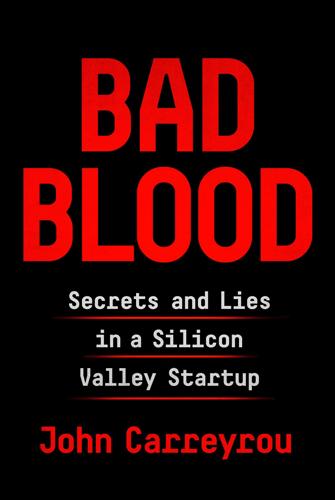
Bad Blood: Secrets and Lies in a Silicon Valley Startup
by
John Carreyrou
Published 20 May 2018
They all said the same thing, in increasingly threatening tones: he needed to come back to the office, let Mona delete the emails from his personal email account, and sign the affidavit. Or else the company would sue him. Alan realized that they weren’t going to stop. He needed a lawyer. Contacts with that Washington firm had gone nowhere. He needed someone local he could consult in person. He called the first listing that came up in a Google search: a medical malpractice and personal injury attorney in San Francisco. She agreed to represent him after he paid her a ten-thousand-dollar retainer. As his new lawyer saw it, Alan didn’t have much of a choice. Theranos could make a case that his actions did breach his confidential obligations. And even if it failed to do so, it could tie him up in court for months, if not years.
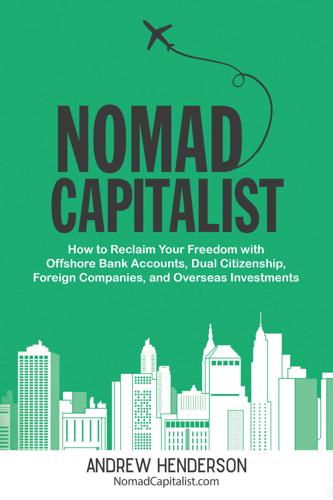
Nomad Capitalist: How to Reclaim Your Freedom With Offshore Bank Accounts, Dual Citizenship, Foreign Companies, and Overseas Investments
by
Andrew Henderson
Published 8 Apr 2018
One lady just dropped dead after a hangnail came free and got stuck in her lung.” One time, when I went to the doctor to treat a scratched cornea from trying to get a contact lens out, I was cautioned that we could not rule out blindness as a result of the incident. For all of these circumspect admonishments, far more people in the United States die of medical malpractice every year than from hangnails or scraped up eyeballs. To make matters worse, the cost of this care is absolutely out of control. My bill for having my eye checked out topped $500. “Can’t be too careful,” they say. If you were to listen to my Thai doctor, maybe you can be. Meanwhile, in many countries with socialized medicine, wait times are so ridiculous that many patients are simply opting to go elsewhere for care, or paying out of pocket for private care.

Autistic Community and the Neurodiversity Movement: Stories From the Frontline
by
Steven K. Kapp
Published 19 Nov 2019
New Resistance and Organizing Against the School of Shock While attending law school in Boston, Shain threw themselves into challenging JRC, confronting Massachusetts Governor Deval Patrick about JRC during a public appearance, authoring two papers on legal strategies 202 S. M. Neumeier and L. X. Z. Brown to stop JRC, leading a session at the annual Rebellious Lawyering Conference, and giving an invited presentation at the Symposium on Ethical, Legal, and Social Implications of Autism Research. In April 2012, Shain attended nearly the entire medical malpractice trial against JRC for torturing Andre McCollins, sitting only feet behind Matthew Israel while taking painstaking notes for the public [14–20]. During that trial, video of JRC’s shocks first aired publicly. Shain also began working with troubled teen industry survivors, including with the Community Alliance for the Ethical Treatment of Youth (CAFETY).

Fortunes of Change: The Rise of the Liberal Rich and the Remaking of America
by
David Callahan
Published 9 Aug 2010
Fred Baron, who had made a fortune litigating asbestos cases and had given a big chunk of it to the Democrats, most notably to John Edwards, was a longtime resident of Preston Hollow before his death in October 2008. Not far from Bush lives Les Weisbrod, who advertises himself as the “pitbull” of Texas’s medical malpractice bar and is among the larger Democratic donors in Texas. Other major Democratic donors in Preston Hollow include Charles Siegal, a partner at Waters & Kraus; Terrell Oxford, with the liberal firm of Susman Godfrey; and Steven Baron (no relation to Fred), with Baron & Budd. A few hundred miles away, in the richer and more famous Texas neighborhood of River Oaks, Houston, the picture is much the same.
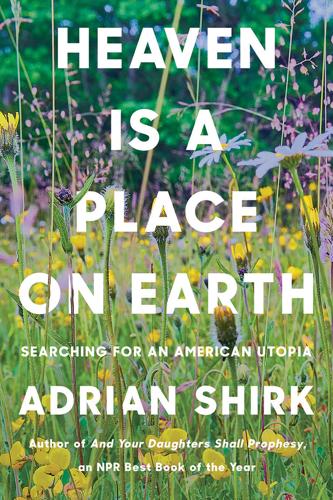
Heaven Is a Place on Earth: Searching for an American Utopia
by
Adrian Shirk
Published 15 Mar 2022
All of my ideas about prudent use of time and effort and intent were subsumed by the way this ecosystem worked, and only because for the first time in my entire adult life my days were wide open, so I could pay attention to the kinds of forces in nature that made me question how much intention really matters, if the world is so old and has gone on without us for much of that time. Instead of intent, the land and my own life seemed to be asking for presence. It was getting on in the season. An unexpected windfall came through to us when Dan settled out of court on a medical malpractice case from four years earlier—from when he was still in the coma—and suddenly we had enough cash to pay off a significant portion of our student loans, making our debt-to-income ratio, for the first time since we were each eighteen, such that we could apply for a mortgage on my adjunct income alone.

Moneyland: Why Thieves and Crooks Now Rule the World and How to Take It Back
by
Oliver Bullough
Published 5 Sep 2018
The complaints that American lawyers had made about the futility of bringing legal proceedings in Nevis were incomprehensible, she said. ‘US lawyers were involved in the drafting of our legislation, so it’s most surprising. Most surprising.’ Didn’t some of the island’s provisions make it hard for women to get a fair divorce settlement, or for victims of medical malpractice to seek recompense? I continued. Wasn’t it disproportionate to expect people to front up a $100,000 bond just to bring a case in the Nevis court? ‘Some countries are very litigious. If you can get a little burn on your hand, because you spill a McDonald’s coffee, somebody will sue you, so this was there to make sure that persons are protected, and we do not have the jurisdiction of our court being bombarded with frivolous law suits,’ she said.

Miracle Cure
by
William Rosen
Published 14 Apr 2017
Others that had appeared before 1938 were grandfathered . . . though hardly any qualify any longer, since one provision of the Kefauver-Harris Amendments required that it be identical to the version on sale in 1962. * The first use of the term seems to be no older than 1957, when it formed part of the argument in a medical malpractice case. * Her instinct to lecture drug companies on moral as well as scientific grounds soon made her as notorious among pharmaceutical companies as she was lionized by the general public. * Not without controversy. When Burroughs announced the initial price for a year’s treatment with AZT—a then-unthinkable $10,000—they were vilified in the press as profiteering monsters

The Immortal Life of Henrietta Lacks
by
Rebecca Skloot
Published 2 Feb 2010
They also don’t know how or when he learned about Henrietta’s cells. What they do remember is that one day Cofield called Deborah, saying he was a lawyer and that she needed to protect herself and her mother by copyrighting the name Henrietta Lacks. He also said he believed Hopkins was guilty of medical malpractice, and that it was time to sue for the family’s cut of all the money Henrietta’s cells had earned since the fifties, a percentage of which he would take as his fee. He would charge nothing up front, and the Lackses wouldn’t have to pay if he didn’t win. Deborah had never heard about needing to copyright anything, but the family had always thought they should talk to a lawyer about the cells, and Cofield sounded like one they could afford.
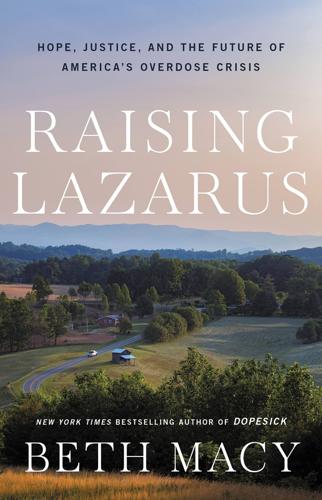
Raising Lazarus: Hope, Justice, and the Future of America’s Overdose Crisis
by
Beth Macy
Published 15 Aug 2022
“I can’t imagine another disease on the planet where if somebody didn’t get better, everybody in their life would abandon them,” said Olt’s program director, Chris Schaffner. “Imagine having cancer and chemo, and everyone in your family going, ‘Fuck it.’ The idea that you have to hit bottom [before you can get better]—that’s medical malpractice.” Barnard, the outreach peer, was focusing on a new homeless encampment next to a Peoria bridge that had sprung up at the site of comedian Richard Pryor’s childhood home. She was blanketing the area with Narcan and using an online sex worker site to reach out to women who needed help with housing and harm-reduction supplies.
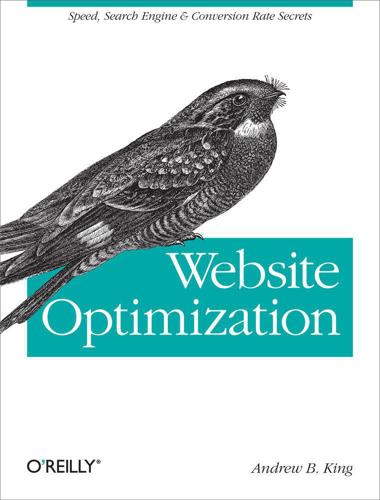
Website Optimization
by
Andrew B. King
Published 15 Mar 2008
Although you can separate keywords with a comma or a space, omitting commas will give you more proximity hits between adjacent terms. Use lowercase text to better match search queries and for better compressibility. For example: <meta name="keywords" content="orlando florida personal injury lawyer, central florida personal injury attorneys, florida medical malpractice lawyers, orlando injury attorneys, orange county automobile accident attorney, personal injuries central florida, orlando law firm"> Avoid repeating your keywords in the same form more than three times. It is best to vary your terms using stems, plurals, splits, and misspellings. Warning Avoid using the trademarks and brand names of other companies in your keywords.

Years of the City
by
Frederik Pohl
Published 1 Jan 1984
Two weeks ago I was revived, treated and discharged. I have since learned that, through an error in record-keeping, I received not only the treatments proper to my case but also an entire series that had been intended for another occupant of the freezer, also revived at that time. As this is a clear example of medical malpractice, resulting in grave physical and mental harm—” “Hold it a minute, chotz,” said Angel, his voice thin and reedy because he was doing several things at once and could manage only a narrow-band communication. “Where’s this other person?” Margov said gravely, “He has disappeared.” “Ah, come on.
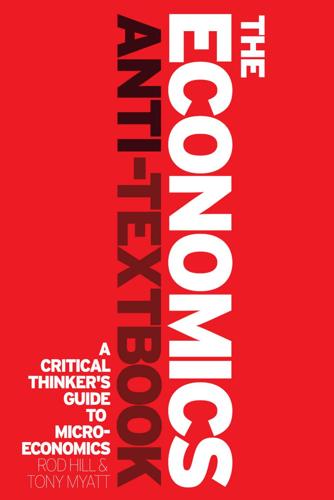
The Economics Anti-Textbook: A Critical Thinker's Guide to Microeconomics
by
Rod Hill
and
Anthony Myatt
Published 15 Mar 2010
As the examples we give suggest, ignorance about what we buy and use is commonplace and in many situations buyers’ ignorance has important consequences. How flammable is your children’s clothing? How will your automobile res pond to crashes of various kinds? Did you get cheated by the mechanic when you had the car repaired? What hidden defects are there in the house you are considering buying? What are your chances of being a victim of medical malpractice? What chemicals are leaching out of plastics into your food and drink and what are the consequences? Are cell phones really safe? And so on. You can be sure that the producers of these goods or services know much more about the answers than their customers. Even if the customers suspect there is a potential problem, they are unlikely to undertake the time-consuming and perhaps technically demanding research on their own.
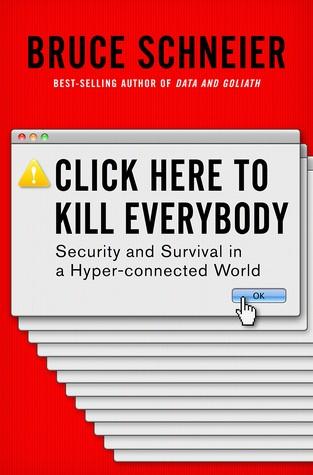
Click Here to Kill Everybody: Security and Survival in a Hyper-Connected World
by
Bruce Schneier
Published 3 Sep 2018
Liabilities aren’t meant to be a black-and-white, all-or-nothing means of government intervention. Regularly, the law establishes carve-outs from liability in some circumstances. This happened in the 1980s, when the small-aircraft industry was almost bankrupted because of excessive liability judgments. There could also be caps on damages, as there are for some medical malpractice claims, although we need to be careful that any caps don’t undermine the desired incentives of liabilities. And while it’s clear that software manufacturers don’t deserve 100% of the liability for a security incident, it is equally clear that they don’t deserve 0%. Courts can figure this out.

Three Felonies a Day: How the Feds Target the Innocent
by
Harvey Silverglate
Published 6 Jun 2011
These are indeed perilous times to practice medicine. There has been much debate about whether it is becoming too expensive for doctors to practice because of the increasingly onerous rates for malpractice insurance. That debate centers on the question of who should bear the risk of medical mistakes and how high medical malpractice insurance premiums can rise before doctors begin to abandon certain areas of specialization. What is given much less attention, however, is another risk attendant to medical practice, namely federal indictment. That risk is particularly acute for certain medical practitioners, such as those who treat chronic pain.
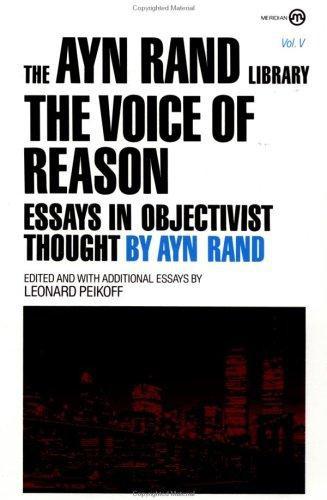
The Voice of Reason: Essays in Objectivist Thought
by
Ayn Rand
,
Leonard Peikoff
and
Peter Schwartz
Published 1 Jan 1989
And I have not yet touched on what is perhaps the worst crisis in the field of medicine today, the one most demoralizing to the doctors: the malpractice crisis. This crisis illustrates dramatically, in yet another form, the lethal effects of government intervention in the field of medicine. Medical malpractice suits have trebled in the past decade. There are now [1985] about sixteen lawsuits for every hundred doctors. In addition, awards to plaintiffs average around $330,000 and are steadily climbing. The effect of this situation on physicians is unspeakable. First, I have been told, there is fear, chronic fear, the terror of the next attorney’s letter in the mail.
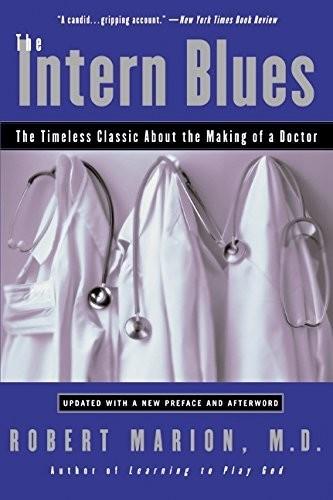
The Intern Blues: The Timeless Classic About the Making of a Doctor
by
Robert Marion
Published 1 Jan 1989
Like the interns who came before them and like the interns who will follow them, they’re at present trapped in the depths of the February depression. But I’ve told them to take heart. The light for them is beginning to appear at the end of the tunnel. A lot has happened to the public’s conception of internship over the past year. Various cases of suspected medical malpractice caused in at least some small part by the fact that unsupervised, overtired, and overwhelmed interns had allegedly made errors in judgment at critical junctures in the management of patients have received a great deal of publicity. The effect of this media attention has been that the lay public’s eyes finally have been forced open to the fact that young doctors are often required to work over a hundred hours a week in a system that’s antiquated, unnatural, and unhealthy for both the patients and the physicians themselves.

Wealth and Poverty: A New Edition for the Twenty-First Century
by
George Gilder
Published 30 Apr 1981
Just as a siege of saving, or hoarding of gold, impelled by a fear of economic trouble, may cause depression by greatly reducing consumer demand, so a siege of insurance can bring about some of the dangers that motivate it. Even private insurance firms, under the pressure of government to extend their services, can suffer from a number of serious moral hazards. Arson for some years was among America’s most popular crimes; most of it was induced by fire insurance. Medical malpractice suits have burdened the entire industry and snarled the services of doctors in red tape, largely because juries rush to award huge settlements on the assumption that insurance will pay. Health insurance has so dramatically raised medical costs—by removing any concern with price from the calculations of doctors and patients—that the residual down payments (the deductibles) often exceed the total payments of the past.
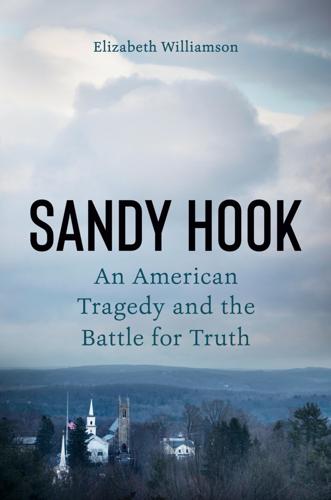
Sandy Hook: An American Tragedy and the Battle for Truth
by
Elizabeth Williamson
Published 8 Mar 2022
Josh Koskoff, an affable and energetic litigator who was lead lawyer in the Remington case, ran KKB, a third-generation Connecticut firm. While over their history the Koskoffs had taken on big civil rights cases, for years the bulk of their caseload was made up of serious personal injury, wrongful death, and medical malpractice suits. The firm’s late founder, Theodore Koskoff, defended clients ranging from Black Panther members to disgraced trial lawyer F. Lee Bailey. The late Michael Koskoff, Theodore’s son and Josh’s father, had teamed up with Josh’s brother Jacob to write the screenplay for Marshall, a film about an early case in the career of U.S.

Upheaval: Turning Points for Nations in Crisis
by
Jared Diamond
Published 6 May 2019
In health outcomes the United States ranks below all other major democracies, by measures such as life expectancy, infant mortality, and maternal mortality. That’s because the U.S. has high health-related expenditures for purposes not leading to healthy outcomes, such as high insurance premiums charged by our for-profit health insurance companies, high administrative costs, high costs of prescription drugs, high costs of medical malpractice insurance and defensive medicine, and expensive emergency room care for our large uninsured population that cannot afford non-emergency care. We began these two chapters about the U.S. with an account of my country’s strengths. We then discussed what I see as our most serious problems now unfolding.

The Gods of New York: Egotists, Idealists, Opportunists, and the Birth of the Modern City: 1986-1990
by
Jonathan Mahler
Published 11 Aug 2025
The charter buses carrying the live studio audience—or part of it, anyway—arrived from Rockefeller Center in the early afternoon of June 15, wedging themselves between the video trucks, tractor trailer, and satellite dish lined up outside. The one hundred largely white tourists who had turned up earlier in the day in midtown Manhattan expecting to see a show about medical malpractice disembarked and were led inside by NBC pages in navy blazers, khakis, and red ties. Sharpton had personally taken care of the rest of the audience, filling out the large sanctuary with a few hundred Tawana supporters, who would ensure that he had home field advantage. As it happened, there had been a huge Brawley scoop on the cover of the Daily News that morning.

J.K. Lasser's Your Income Tax
by
J K Lasser Institute
Published 30 Oct 2012
The IRS allowed an exception for doctors working in a clinic. The doctors were not taxed on fees for treating patients with limited income (teaching cases) where they were required to assign the fees to a foundation. - - - - - - - - - - Court Decision Tax on Assigned Contingent Fee An attorney who took a medical malpractice case on a contingent fee basis agreed to split the net fee with his ex-wife pursuant to their divorce agreement. After a favorable settlement, the attorney’s take was approximately $40,000 after expenses, half of which went to his ex-wife. Each paid tax on his or her share. The attorney argued that his partial assignment of the fee could shift the tax liability because collection was contingent on the outcome of the lawsuit.
…
The attorney supervised three clerical employees in providing legal support services to the tenant firms, which included client intake, answering phones and taking messages, conducting legal research, typing briefs and memoranda, binding briefs, photocopying, taking dictation, express mailing, process serving, filing documents at the courthouse and state capital, maintaining a file room, law library, and conference facilities, and providing coffee service. Her husband provided consulting services to the attorneys, reviewing medical malpractice cases, serving as an expert medical witness, helping the attorneys prepare for accreditation reviews of health-care organizations, and providing quality assurance trainings. Before the Tax Court, the tenant firms testified that these support services, particularly the legal research, were unique and that they would not have moved into the LLC’s building without them.

J.K. Lasser's Your Income Tax 2014
by
J. K. Lasser
Published 5 Oct 2013
The IRS allowed an exception for doctors working in a clinic. The doctors were not taxed on fees for treating patients with limited income (teaching cases) where they were required to assign the fees to a foundation. - - - - - - - - - - Court Decision Tax on Assigned Contingent Fee An attorney who took a medical malpractice case on a contingent fee basis agreed to split the net fee with his ex-wife pursuant to their divorce agreement. After a favorable settlement, the attorney’s take was approximately $40,000 after expenses, half of which went to his ex-wife. Each paid tax on his or her share. The attorney argued that his partial assignment of the fee could shift the tax liability because collection was contingent on the outcome of the lawsuit.
…
The attorney supervised three clerical employees in providing legal support services to the tenant firms, which included client intake, answering phones and taking messages, conducting legal research, typing briefs and memoranda, binding briefs, photocopying, taking dictation, express mailing, process serving, filing documents at the courthouse and state capital, maintaining a file room, law library, and conference facilities, and providing coffee service. Her husband provided consulting services to the attorneys, reviewing medical malpractice cases, serving as an expert medical witness, helping the attorneys prepare for accreditation reviews of health-care organizations, and providing quality assurance trainings. Before the Tax Court, the tenant firms testified that these support services, particularly the legal research, were unique and that they would not have moved into the LLC’s building without them.
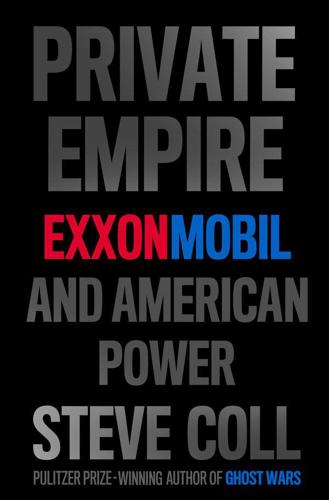
Private Empire: ExxonMobil and American Power
by
Steve Coll
Published 30 Apr 2012
At twenty-four, he set up an independent legal practice devoted to “contingency-fee” cases, in which he generally sued corporations on behalf of individuals and got paid only if he won damages or settled for cash. “I don’t think you could hire me for an hourly rate, no matter what,” he explained later. “If I win, I have to have some skin in the game, a piece of the action.” He won his first million-dollar medical malpractice verdict in the 1980s and kept going. United Cable settled a racial discrimination case with him in 1990 for $106 million. The accounting firm Ernst & Young settled over a business bankruptcy matter for $185 million. He won a jury verdict against a bank for $276 million. A contingency attorney such as Snyder generally took about a third of such verdicts as his fee.10 By the time of the Jacksonville Exxon gasoline leak, Stephen Snyder had reached his late fifties.
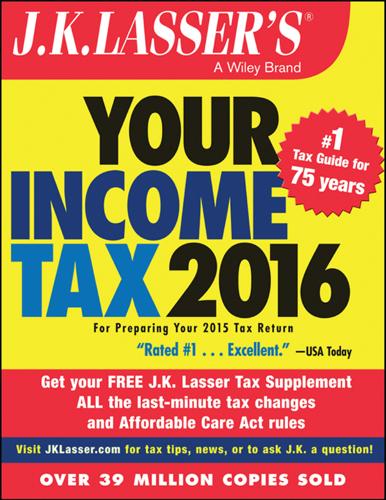
J.K. Lasser's Your Income Tax 2016: For Preparing Your 2015 Tax Return
by
J. K. Lasser Institute
Published 19 Oct 2015
The IRS allowed an exception for doctors working in a clinic. The doctors were not taxed on fees for treating patients with limited income (teaching cases) where they were required to assign the fees to a foundation. Court Decision Tax on Assigned Contingent Fee An attorney who took a medical malpractice case on a contingent fee basis agreed to split the net fee with his ex-wife pursuant to their divorce agreement. After a favorable settlement, the attorney’s take was approximately $40,000 after expenses, half of which went to his ex-wife. Each paid tax on his or her share. The attorney argued that his partial assignment of the fee could shift the tax liability because collection was contingent on the outcome of the lawsuit.
…
The attorney supervised three clerical employees in providing legal support services to the tenant firms, which included client intake, answering phones and taking messages, conducting legal research, typing briefs and memoranda, binding briefs, photocopying, taking dictation, express mailing, process serving, filing documents at the courthouse and state capital, maintaining a file room, law library, and conference facilities, and providing coffee service. Her husband provided consulting services to the attorneys, reviewing medical malpractice cases, serving as an expert medical witness, helping the attorneys prepare for accreditation reviews of health-care organizations, and providing quality assurance trainings. Before the Tax Court, the tenant firms testified that these support services, particularly the legal research, were unique and that they would not have moved into the LLC’s building without them.

The Price of Silence: The Duke Lacrosse Scandal
by
William D. Cohan
Published 8 Apr 2014
In the warrant for her arrest, Durham police wrote that there was “probable cause” to believe that Mangum “unlawfully, willfully and feloniously did assault” Daye with a “KITCHEN KNIFE, a deadly weapon, with the intent to kill and [inflict] serious injury.” In a 911 call from Daye’s nephew to police, after Daye had been stabbed, the nephew said to the dispatcher, “It’s Crystal Mangum. THE Crystal Mangum! I told him she was trouble from the damn beginning.” Daye died eleven days later at Duke Hospital. “His death was a result of medical malpractice at Duke Hospital,” Mangum told me from jail. “Everything was fine. He was getting ready to be discharged. All of a sudden they put that endotracheal tube—instead of putting it in his trachea, they put it in his esophagus. So it went into his stomach, so they filled the stomach up with air while his lungs were deflating.

J.K. Lasser's Your Income Tax 2022: For Preparing Your 2021 Tax Return
by
J. K. Lasser Institute
Published 21 Dec 2021
Where only part of the contribution is subject to forfeiture, the amount of withheld contribution not subject to forfeiture is taxable income. You should check with your employer to determine the status of your contributions. Court Decision Tax on Assigned Contingent Fee An attorney who took a medical malpractice case on a contingent fee basis agreed to split the net fee with his ex-wife pursuant to their divorce agreement. After a favorable settlement, the attorney's take was approximately $40,000 after expenses, half of which went to his ex-wife. Each paid tax on his or her share. The attorney argued that his partial assignment of the fee could shift the tax liability because collection was contingent on the outcome of the lawsuit.
…
The attorney supervised three clerical employees in providing legal support services to the tenant firms, which included client intake, answering phones and taking messages, conducting legal research, typing briefs and memoranda, binding briefs, photocopying, taking dictation, express mailing, process serving, filing documents at the courthouse and state capital, maintaining a file room, law library, and conference facilities, and providing coffee service. Her husband provided consulting services to the attorneys, reviewing medical malpractice cases, serving as an expert medical witness, helping the attorneys prepare for accreditation reviews of health-care organizations, and providing quality assurance trainings. Before the Tax Court, the tenant firms testified that these support services, particularly the legal research, were unique and that they would not have moved into the LLC's building without them.

Ashes to Ashes: America's Hundred-Year Cigarette War, the Public Health, and the Unabashed Triumph of Philip Morris
by
Richard Kluger
Published 1 Jan 1996
Waxman’s astute aide Ripley Forbes found that there was no great anti-preemption sentiment within the Coalition’s ranks, in all likelihood because its constituent organizations included a great many doctors who bore a professional antipathy to lawyers and lawsuits, in particular those claiming medical malpractice, and were not eager to bolster the rights of litigants in general. Myers told Gore that if dropping the preemption exclusion was what it would take to seal the deal, he would accept it—only to be told soon thereafter that the industry still had another dozen or so “problems”. By this point, Myers was ready to pull out of the negotiations and take his chances on a floor vote—assuming that Dingell ever freed the measure.

God's Bankers: A History of Money and Power at the Vatican
by
Gerald Posner
Published 3 Feb 2015
Constitution’s separation of church and state as a financial shield, saying it prevented any court from interfering with its church-granted powers.84 “Neither the bishop nor the diocese is the owner of parish property under Canon Law,” Nicholas Cafardi, the dean of Duquesne Law School and himself a canon law scholar, said in a sworn statement.85 Notwithstanding all its careful planning to keep a legal moat around the Vatican, in 2003 the church was caught by surprise when a Louisville, Kentucky, gun-slinging medical malpractice attorney, William McMurray, filed a federal class action and named the Holy See. Three Louisville men claimed they were abused by priests for decades and sought damages on behalf of all American victims of clerical abuse. McMurray based his suit on a 1962 document uncovered in the discovery of another case, signed by Pope John XXIII, directing that sex abuse complaints against priests should be “pursued in a most secretive way.”86 Top church officials were furious about the Kentucky suit and moved to dismiss it on well-established grounds that the Pope was immune as a foreign sovereign from civil litigation in U.S. courts.
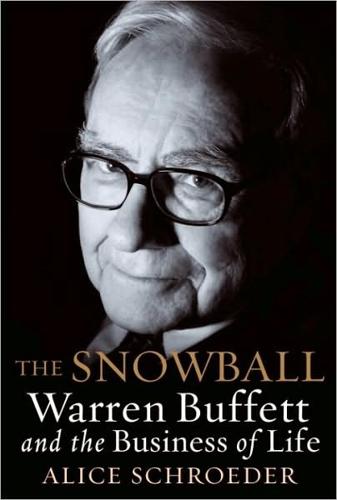
The Snowball: Warren Buffett and the Business of Life
by
Alice Schroeder
Published 1 Sep 2008
In 2003, after I started working on this book, both General Re and Ajit Jain’s Berkshire Re were condemned in a special investigation for selling finite reinsurance that allegedly contributed to the collapse of an Australian insurer, HIH.9 Two years later, General Re was accused of fraud by insurance regulators and policyholders in connection with the failure of a Virginia medical malpractice insurer, the Reciprocal of America. While the Department of Justice investigated the allegations extensively, no charges were brought against Gen Re or any of its employees.10 That same year, Eliot Spitzer’s investigation of the insurance industry prompted an investigation by Berkshire’s law firm, Munger, Tolles & Olson, which discovered that six employees, including General Re’s former CEO, Ron Ferguson, and its former chief financial officer, Elizabeth Monrad, had allegedly conspired with a customer, AIG, to aid and abet an accounting fraud.